Bay boletes are hugely popular wild mushrooms. And they often grow in huge groupings, which is an incredible foraging find! They have a beautiful, rich flavor that rivals the famous Cep (Porcini/King Bolete) mushroom (its cousin). The bay bolete (Imleria badia) grows across northeastern America, the upper Midwest, and the Appalachians and shows up from late summer through autumn. Keep an eye out for this delicious mushroom in the fall. It has some lookalikes, but nothing dangerous, just terrible tasting. Among the edible boletes, this one is pretty easy to identify.
- Scientific Name: Imleria badia
- Common Names: Bay bolete, false cep
- Habitat: On the ground, using with conifer trees
- Edibility: Edible, and choice
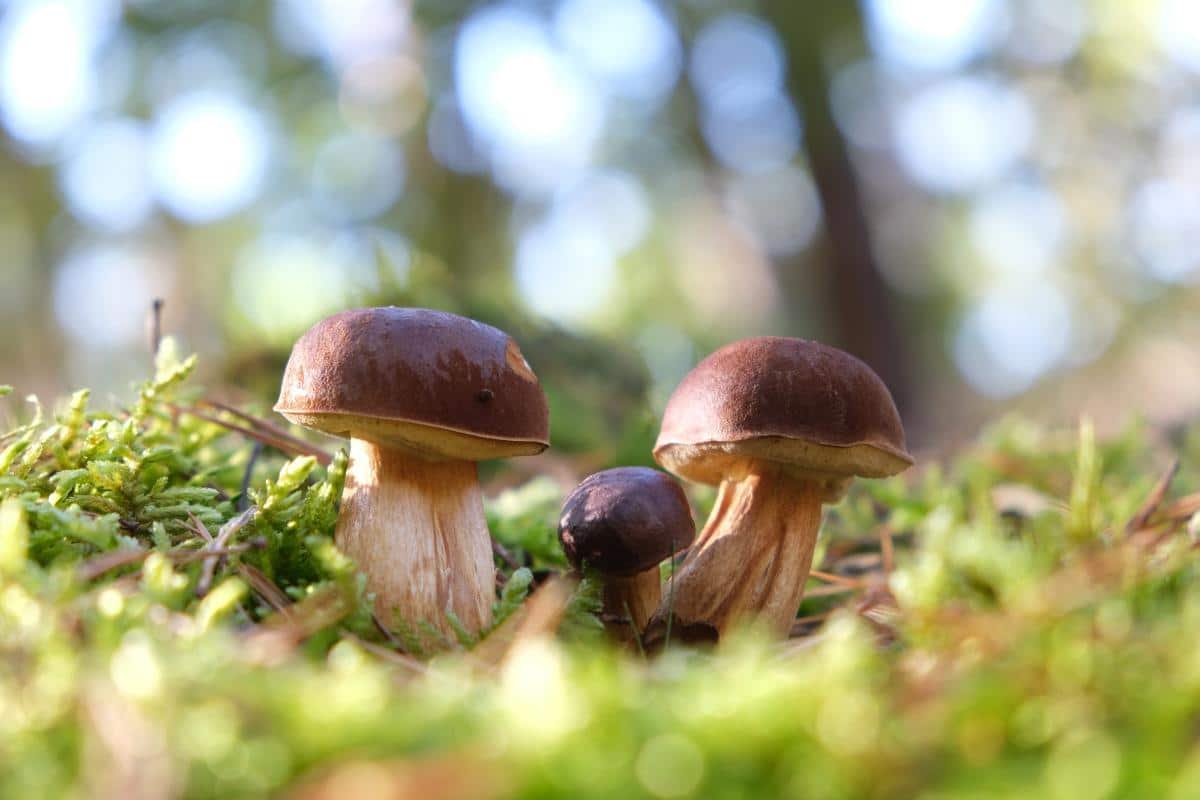
All About Bay Boletes
The bay bolete is an excellent edible mushroom that resists insect damage better than other bolete species. This is just one reason it’s such a great find. So many other top edible boletes get decimated by slugs and bugs super quickly. It has a distinctive chestnut-brown cap and pale yellow pore surface that turns bluish-gray when bruised.
The bay bolete is part of a distinct genus that scientists separated from its previous classification as Xerocomus badius. The species name “badia” comes from its bay or chestnut-brown color, and the genus Imleria honors Belgian mycologist Louis Imler.
Imleria badia grows in many parts of the world. In North America, it grows from eastern Canada west to Minnesota and south to North Carolina. These mushrooms typically appear between July and November. They are a mycorrhizal species that creates partnerships with conifers and sometimes beech and birch.
The fruit bodies of these mushrooms can be used to create mushroom dyes. The specific color obtained depends on the mordant used. Some possibilities include yellow, orange, gold, and green-brown. If no mordant is used, a yellow color is produced.
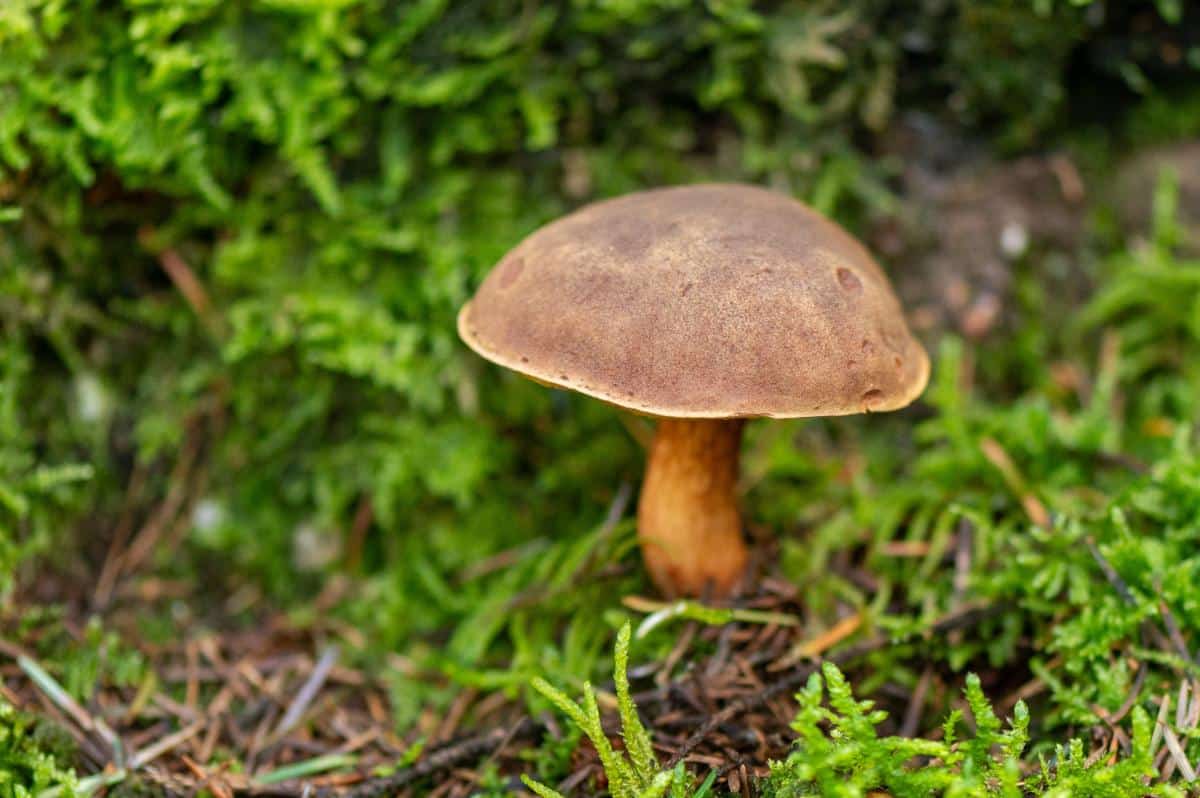
Bay Bolete Identification
Season
Bay boletes grow abundantly in coniferous and mixed woodlands during summer and autumn.
Habitat
These mushrooms are most commonly under pine, spruce, and hemlock trees. They particularly seem to like eastern hemlock and pine trees. They will also grow beneath deciduous trees like beech, oak, and silver birch, though.
These boletes grow on the ground beneath the preferred tree host. They may fruit around or from extremely decayed wood, especially mossy stumps. These mushrooms grow singularly but may appear in scattered or dense groupings in an area. They do not grow on live trees or intact logs or wood.
Fruiting is most abundant three or four days after rain in warm weather. It can be plentiful, especially in humid and shady highland areas. It can also grow in grassy or mossy areas near the edges of forests. The mushrooms are often hidden by ferns or pine needle debris.
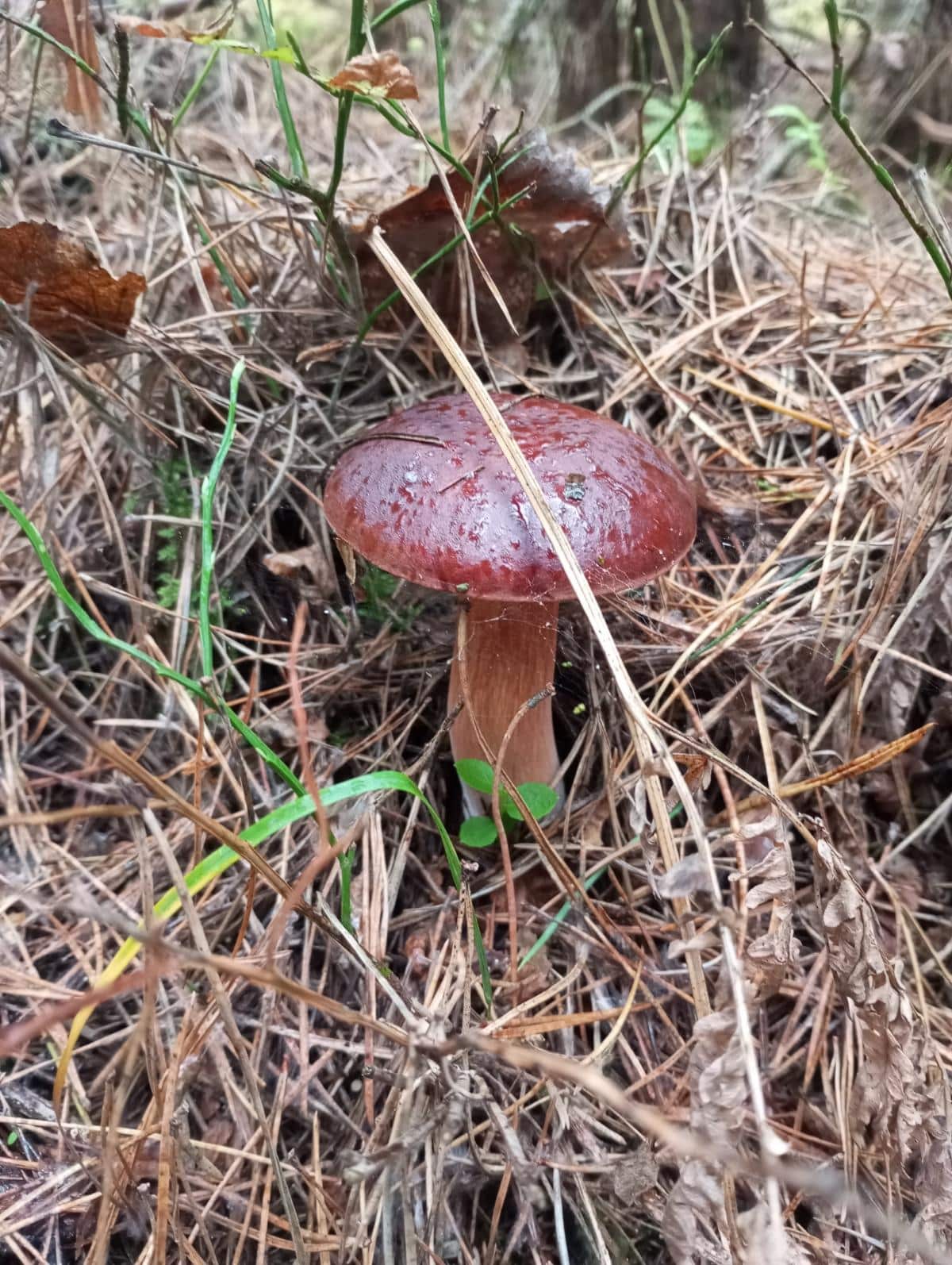
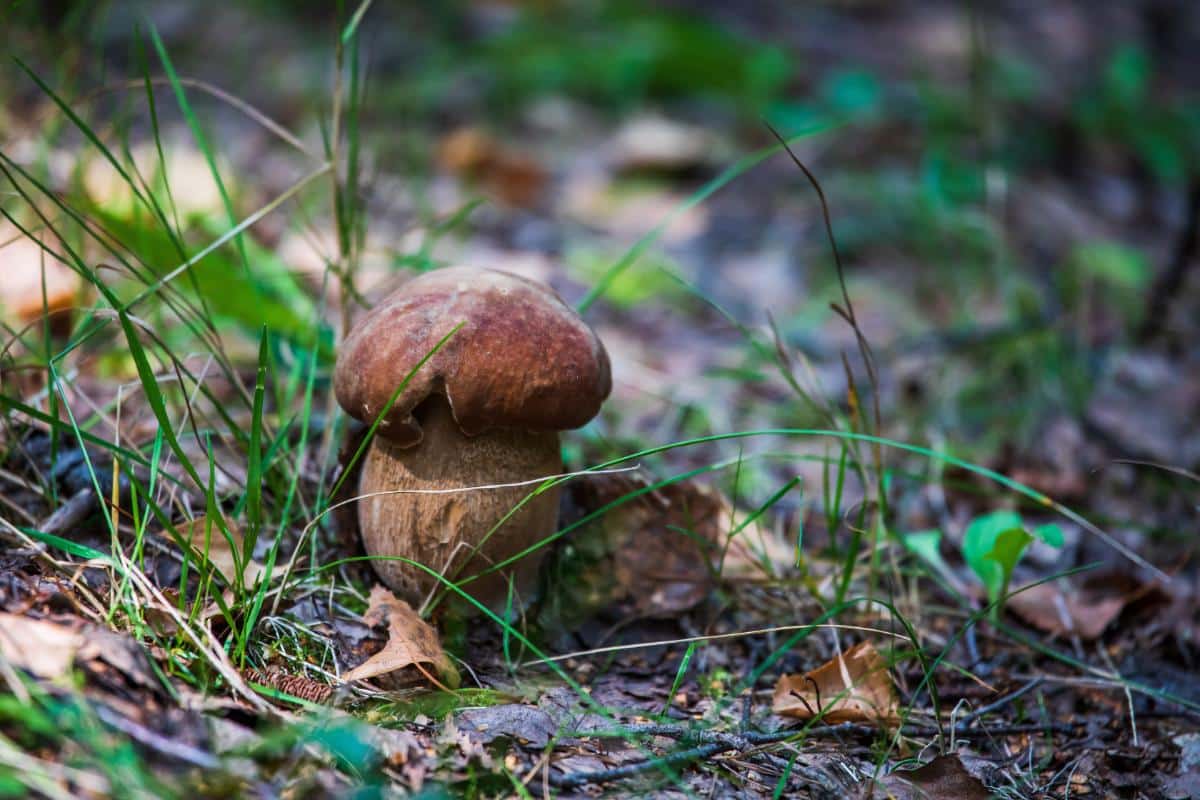
Identification
Cap
The cap is 2-6 inches across and rich dark brown to reddish-brown, or chestnut or bay colored. Young specimens have a domed shape with a slightly downy or velvety texture. The surface becomes sticky in wet weather. The cap doesn’t have any decorations. With age, the cap may turn upwards at the edges and show off the pore surface.
Pores
The pore surface is pale yellow and turns yellow-green as the mushroom matures. Older specimens will have olive-colored pores. The pores turn bluish-gray when damaged, which is a key way to separate this species from lookalikes.
Stem
The stem averages 2-6 inches tall. It is cylindrical shaped and may be curved or bulging slightly in the middle. The upper portion of the stem is pale yellow to pale brown, and the lower part is brown to reddish brown. The stem is covered in fine brown ridges, which create a distinctive tan-streaked appearance.
Flesh and Staining
The flesh ranges from white to pale yellow. Usually, the flesh does not change color when cut. However, the flesh may turn very faintly blue when cut, especially near the top of the stem. Sometimes, right under the cap’s skin, the flesh shows hints of wine-red coloring.
Smell and Taste
The mushroom has a mild, mushroomy smell. Some foragers describe the scent as slightly fruity. The taste is slightly soapy (you can do a nibble and spit test to determine taste).
Spore Print
The spore print is olive to olive-brown print.
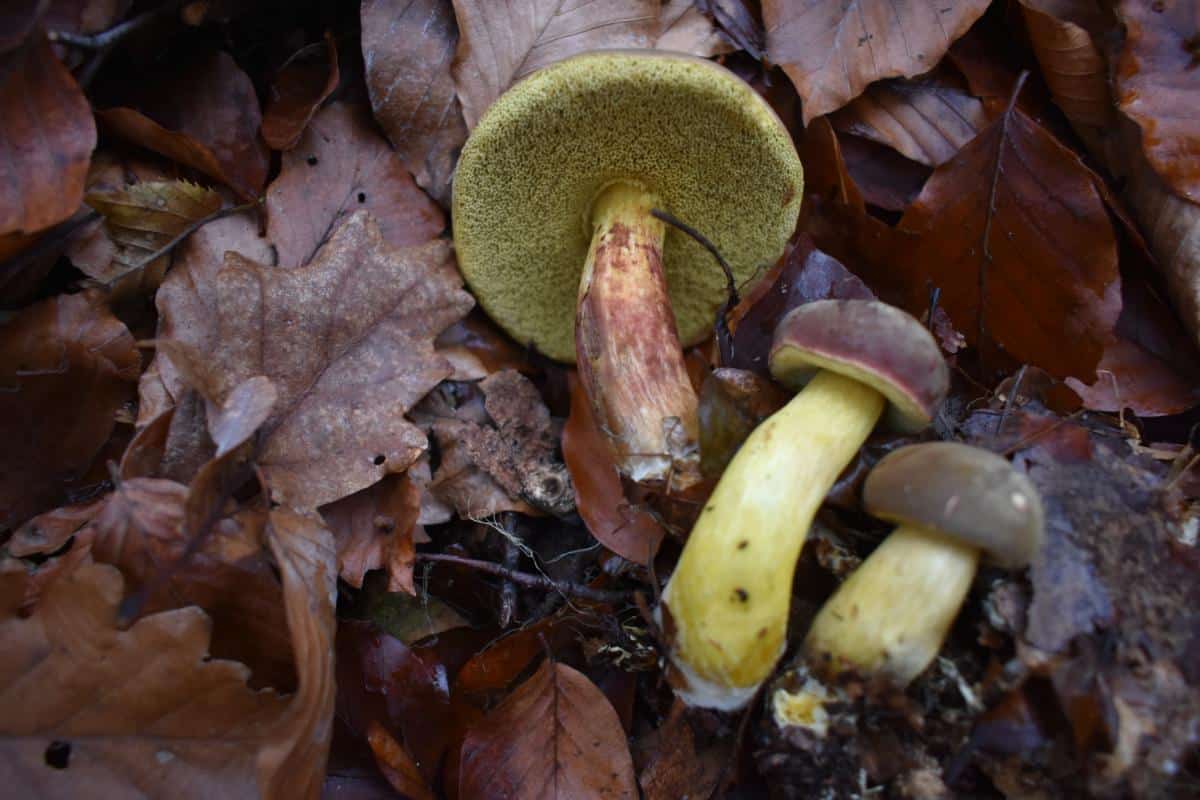
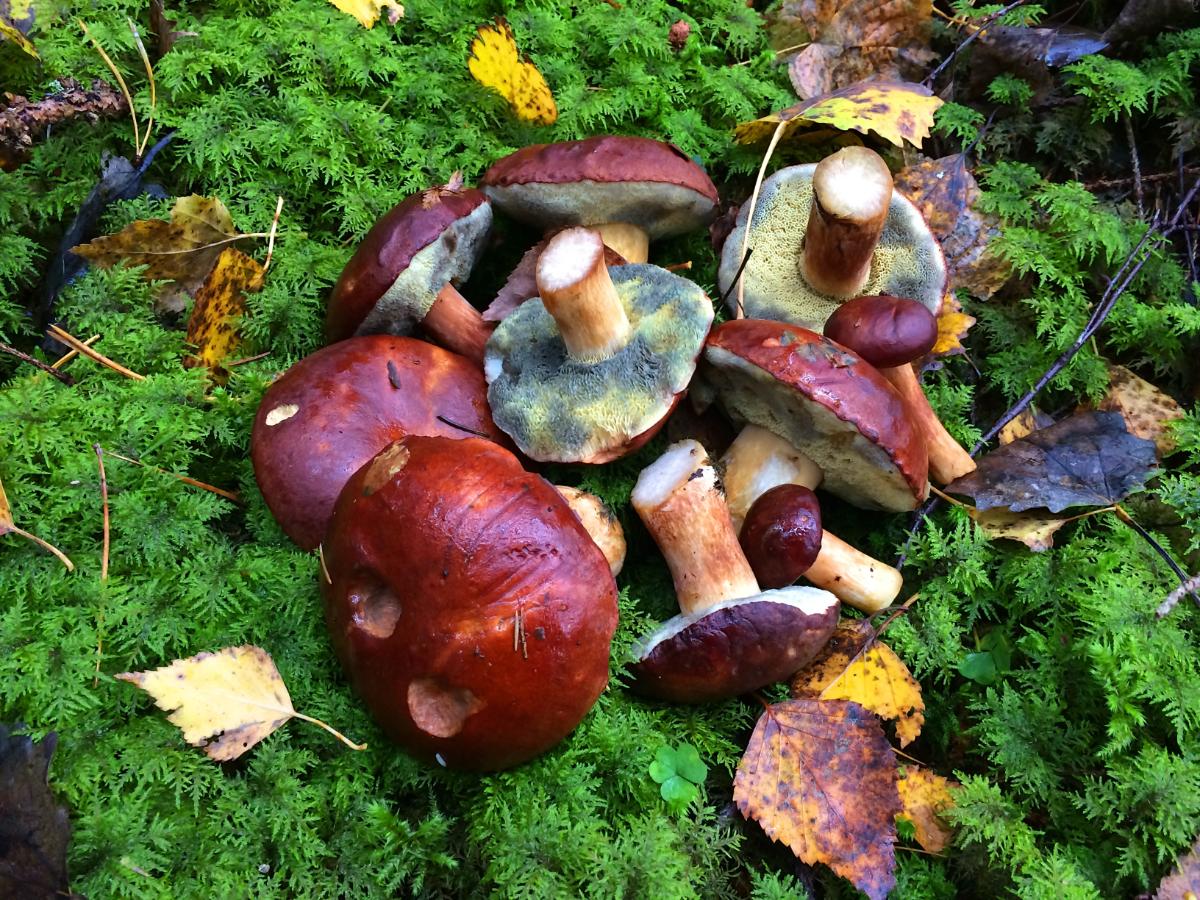
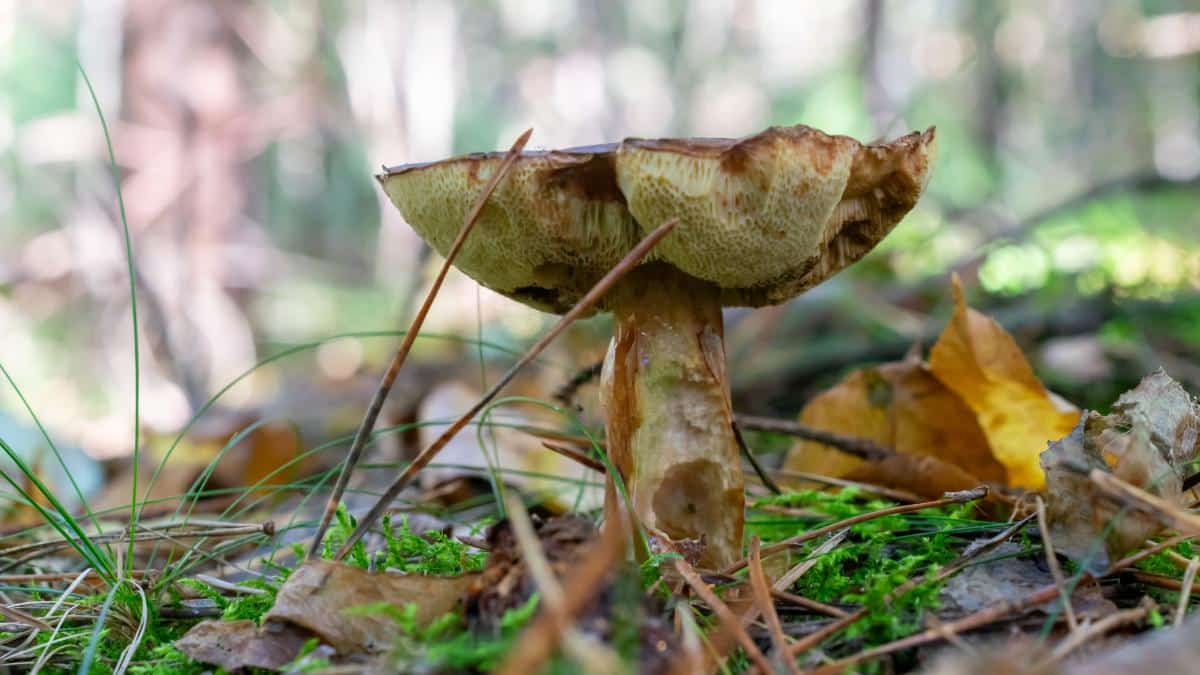
Bay Bolete Lookalikes
Other Boletes
The Queen Bolete (Boletus regineus), Penny Bun/King Bolete (Boletus edulis), and Summer Bolete (Boletus cf. reticulatus) look quite a bit like the bay bolete. However, these edible relatives have distinct net-like patterns on their upper stems that set them apart from the bay bolete’s smooth stalk. Their pores also don’t bruise like the bay bolete’s.
Key differentiation features from other Boletes:
The quickest way to differentiate these mushrooms from other boletes relies on these main points.
- Check the stem for reticulation – bay boletes don’t have the net-like pattern common in similar species.
- Look for pores that bruise – bay boletes have yellow pores that gradually turn blue when bruised.
- Check for flesh staining — the flesh of the bay bolete usually doesn’t stain blue, although it might very faintly and slowly towards the top of the stem.
- Do a taste test — use the nibble and spit taste test to check the flavor of the mushroom. Bay boletes have a slightly soapy taste.
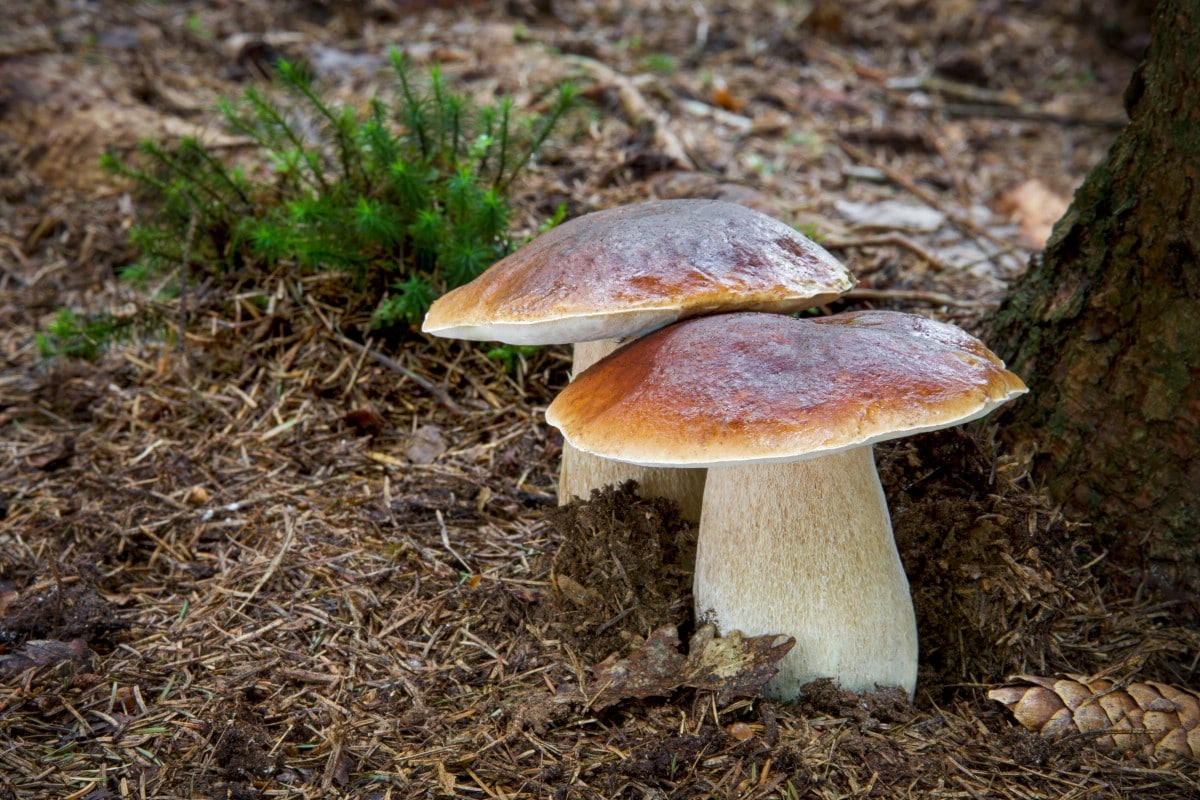
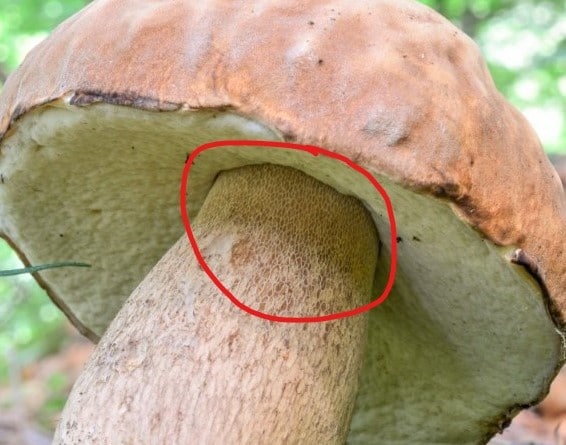
Cooking With Bay Boletes
Bay boletes have a distinctive taste with mild, nutty undertones and a subtle sweetness. Fresh ones have a delicate mushroom flavor that gets stronger when cooked. Dried specimens typically develop a more concentrated taste, which makes them ideal for soups and stews where their rich, earthy notes can shine.
These mushrooms just need a quick brush to remove dirt and debris from their surface. They’re usually not so dirty that they need intensive cleaning or soaking. Soaking isn’t a good idea, either, because the pores are like a sponge. Cut the mushrooms lengthwise to check for any insect damage. Take the pore surface off if it looks old or feels too soft.
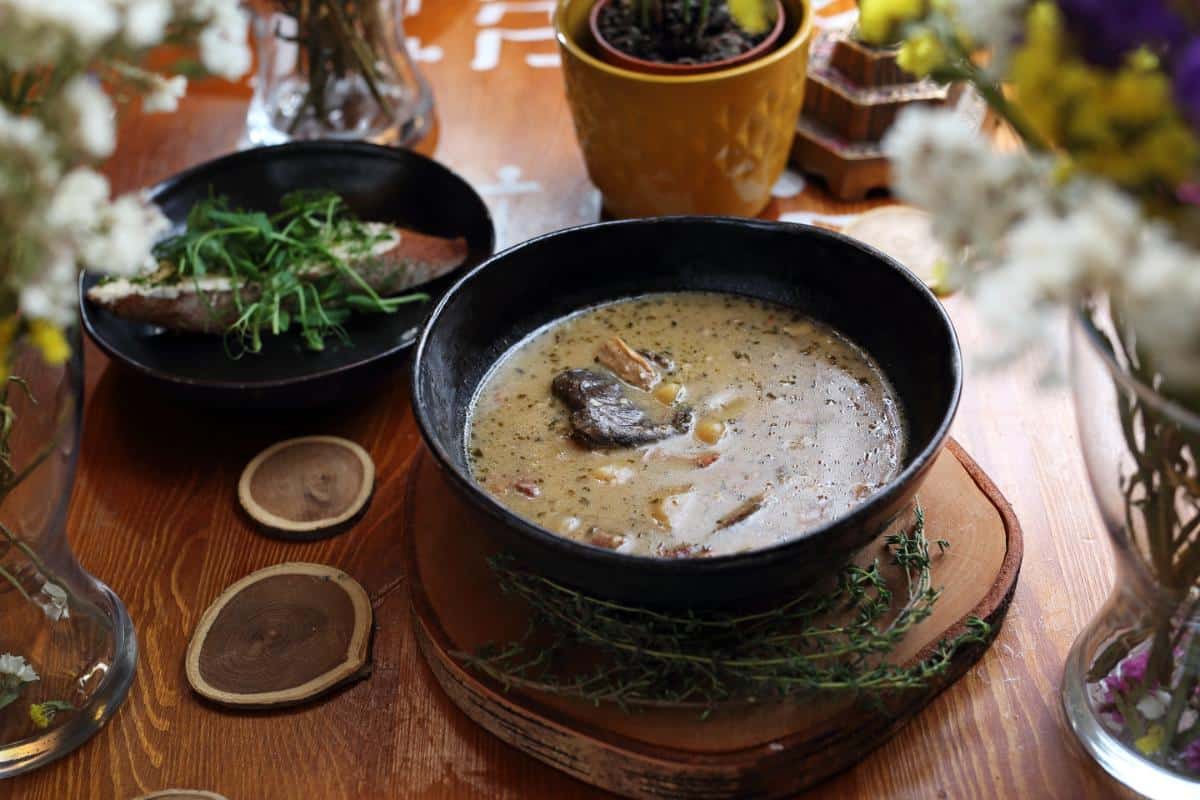
The quickest way to start is by trimming the stem base and removing damaged parts. Slice the mushrooms into pieces no thicker than 0.5 inches for the best results. They naturally darken during cooking – this won’t affect their taste or edibility.
Fresh bay boletes taste great with eggs, pasta, or rice dishes. Their resilient texture works well in long-cooking recipes like stews and casseroles. Many chefs use dried ones in winter soups to add a deep, satisfying flavor to the broth.
There aren’t a lot of recipes specifically for bay boletes, but they can be used in any recipe that calls for porcini (aka ceps, king boletes). Their flavor profile is close enough that they can be interchanged.
Bay Bolete Recipes:
- Spaghetti Tetrazzini with Bay Bolete Recipe
- Forest Mushroom Risotto
- Nordic Style Marinated Mushrooms (video)
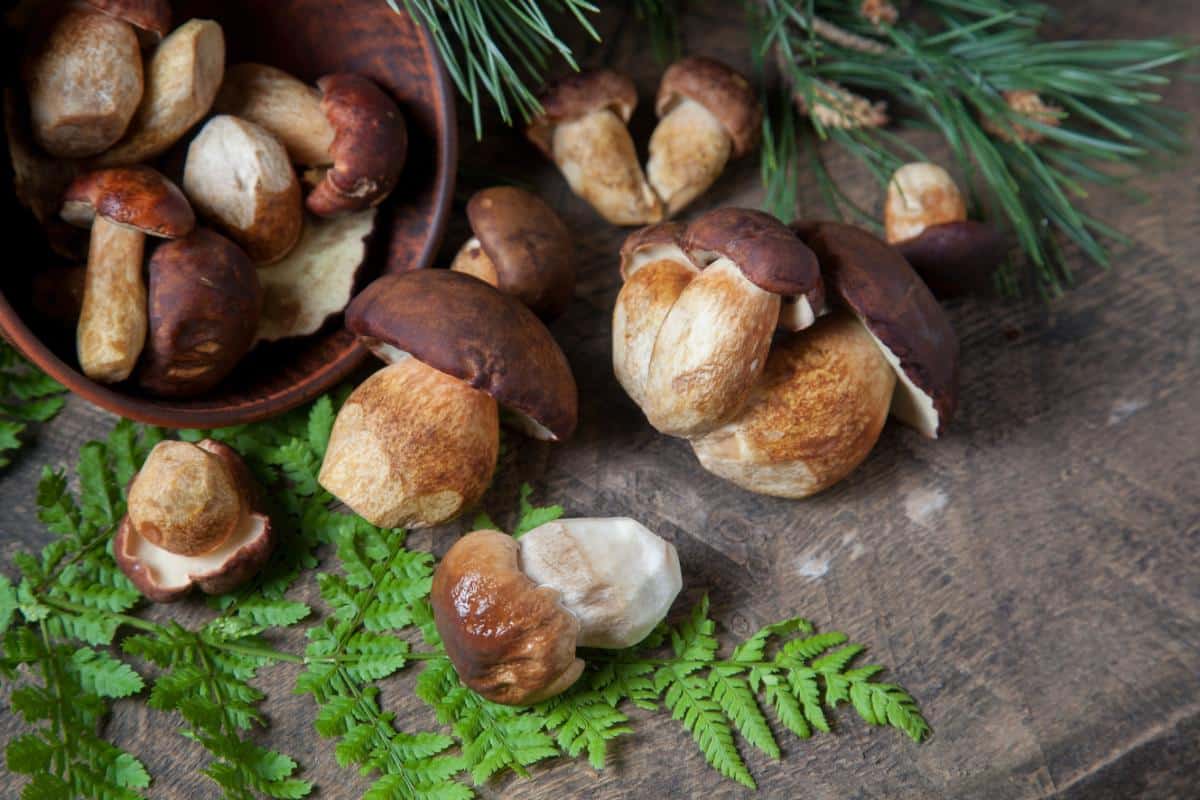
Medicinal Properties of Bay Boletes
Lab experiments show that I. badia extracts have strong antioxidative properties. These mushrooms could help treat various conditions, from inflammation to certain cancers. Scientists found norbadione A, a brown pigment that could protect against ionizing radiation. The mushroom contains ergosterol, which fights cancer and inflammation.
Extracts from these bolete mushrooms can alter the fat profiles in macrophage membranes, which may influence how our bodies react to inflammation.
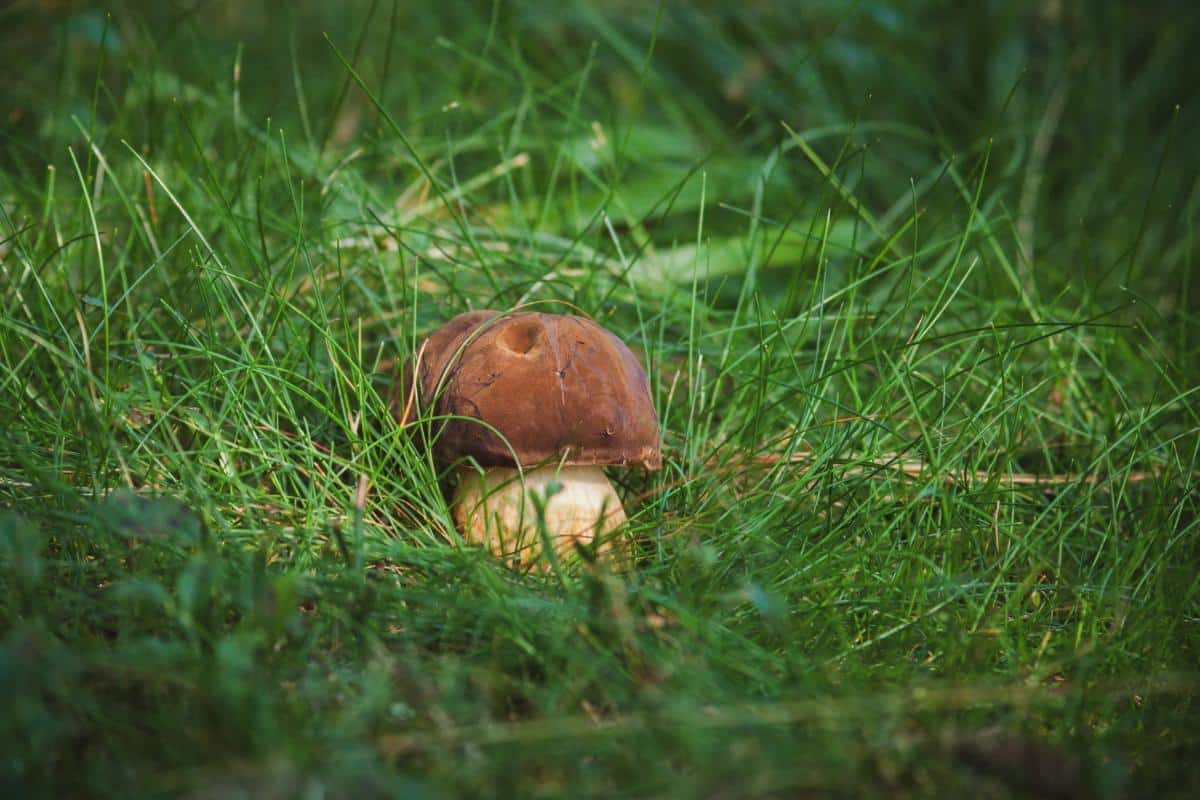
Common Questions About Bay Bolete Mushrooms
How can I identify a bay bolete mushroom?
Bay boletes have a chestnut-brown cap measuring 2-6 inches in diameter, pale yellow pores that turn blue when bruised, and a thick stem with fine brown streaking.
Are bay boletes safe to eat?
Yes, bay boletes are safe and edible.
What are some common lookalikes of the bay bolete?
Common lookalikes include the Queen Bolete, King Bolete, and Summer Bolete, which are all edible. Key differences include stem patterns, bruising reactions, and pore colors.
When and where can I find bay boletes?
Bay boletes typically appear from summer through autumn in coniferous and mixed woodlands. They’re commonly found growing beneath pine, spruce, hemlock, and beech trees in North America.

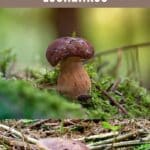

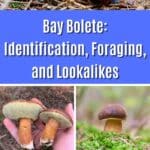
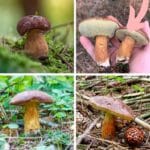
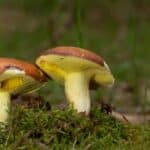
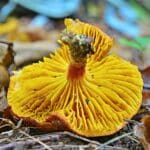
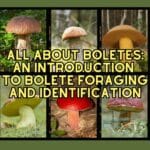
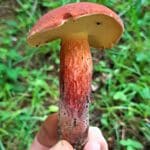
Leave a Reply